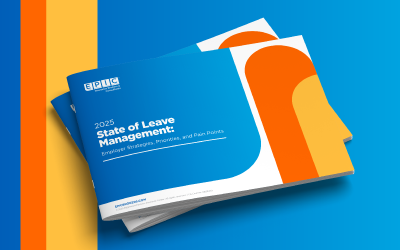Self-insured employers typically establish “premium equivalent rates” in the third quarter of the prior year. These are an estimation of claims based upon the most recent claim data available. While these rates are used to set healthcare cost budgets, the costs that hit an organization’s income statement are based upon actual claim costs paid during the year. Several of the large public brokers predicted significant COVID-19-related costs. The EPIC financial team did not. We believed that the deferral of care would offset any pandemic claim spikes and we were right. As 2020 winds down, it is pretty clear that the rearview mirror on paid claims during the year will show favorable results as compared with budgets that were set in 2019.
For more COVID-19 information visit our dedicated coronavirus resource center
Viewpoints from Craig Hasday
But now it’s the third quarter of 2020 and employers, together with their benefit advisors, are putting together estimates for 2021.
The traditional approach of using the most recent twelve months of claims to estimate costs will not be as reliable.
During the 2020 March through July period, most employers experienced the claim suppression our financial team expected. The experience for these months should be adjusted or normalized, and this normalization will vary between employers. Some areas were more locked down than others and this has an impact on claim suppression. We have also noted that some industries, such as healthcare, appeared to have less claim suppression than others. When and if suppressed claims will bounce back is also a guess. Many areas of the country are opening up and care seems to be resuming, but others are seeing a resurgence of the virus and a corresponding decrease in discretionary care. Will these symptoms simply go away or will they get worse due to lack of treatment. So will there be larger claims in late 2020, early 2021, or perhaps not at all?
Other variables are:
- whether there will be a subsequent wave of infections
- the severity of follow-up care for those infected with COVID-19
- the cost of testing and a vaccine if one is developed
And while hospitalization rates have generally been lower and less severe than expected, the impact varies widely from one organization to another.
Will your company be lucky enough to have no incidence or will multiple employees or their dependents be impacted by COVID-19? It’s difficult enough to predict the frequency of large claims but adding the virus variable makes it more onerous than ever.
The pandemic will also impact costs and usage.
Hospitals and other healthcare providers have been hit hard by the shutdowns and care deferrals and may look to make up that revenue. It’s not easy for providers to increase prices because of multi-year contracts with their networks, but we have seen providers shifting to more expensive care settings and upcoding of procedures. Also, while the shift to lower-cost telemedicine should reduce costs, the contractual rates are not yet aligned to properly reflect the cost-of-care differential. Pharmacy costs are also up since, absent physical examinations and other testing, providers are more aggressively dispensing medications.
These same variables are impacting traditional insurers and stop-loss providers who, on a larger scale, are estimating 2021 costs to establish rates.
Interestingly, carriers are also addressing large profits in 2020. Employers should expect the negotiations of 2021 insured health plan and stop-loss renewals to be tougher than ever.
See results from our In It Together COVID-19 pulse surveys by visiting epicbrokers.com/insights/preparing-for-the-new-normal
EPIC offers these opinions for general information only. EPIC does not intend this material to be, nor may any person receiving this information construe or rely on this material as, tax or legal advice. The matters addressed in this article and any related discussions or correspondence should be reviewed and discussed with legal counsel prior to acting or relying on these materials.
Related Content
Products
Employee Benefits Consulting
Our dedicated benefits team is focused on delivering better outcomes – to both your benefits program and ...
Products
Actuarial
Our Actuarial Team provides guidance on employee benefits and health and welfare programs to help meet ...
Industries
Healthcare
Our healthcare practice is known around the world for its expertise and passion in delivering exceptional ...



